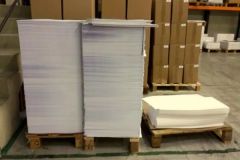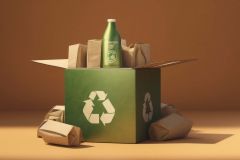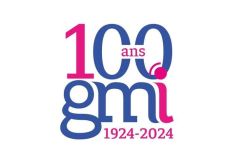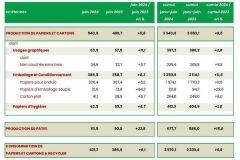France 5's recent documentary on paper and cardboard packaging provoked a strong reaction from the industry. After attracting 823,000 viewers, i.e. 4% audience share, the program provoked strong reactions from the paper and cardboard packaging industry. Although the report was intended to denounce the excesses of this sector, it seems to have rallied the profession against it. In a press release dated September 17, Copacel, Cofepac and the Filpac-CGT, CFDT, FO and CFE-CGC unions strongly criticized the biased treatment of the program. The organizations point out that they had provided journalists with a great deal of information in advance, but that this was largely ignored. They denounced the program's blatant errors and biased approach, accusing it of favoring militant discourse over balanced debate.
Information manipulation: the limits of abusive generalization
One of the main criticisms levelled by the paper and cardboard packaging industry against the France 5 documentary concerns the recurring issue of paper bags. The program asks: "Are they made from recycled materials? . A question that seems to imply that the industry claims to use only recycled fibers. However, this assertion has never been made by the industry. In fact, paper bag production relies mainly on virgin fibers for specific technical reasons, such as strength and capacity. These choices are in no way an environmental obstacle, as the industry has already explained to the editorial team, with figures to back it up.
The procedure employed by the program is therefore based on an abusive generalization and the construction of a presupposition that has never been defended by the industry. This approach leads to a distorted vision of actual practices, ignoring the fact that these bags represent less than 3% of paper and cardboard packaging, and that, for the rest, over 90% is made from recycled cardboard. By focusing on one exception, the documentary fails to provide the viewer with the contextual elements necessary for a proper understanding of the situation.
Shocking figures, but misinterpreted
The program continues in the same vein, evoking the 200,000 tons of old cardboard exported to Vietnam. The ominous music and alarmist tone reinforce the idea of a massive and problematic fact. Yet this figure represents barely 3% of the old cardboard collected in France. This choice of staging, accompanied by partial commentary, masks the reality: the majority of consumer goods are imported from Asia, often in cardboard packaging. It's only logical that some of this packaging should be returned to Asia to be recycled and reused in new production cycles. In fact, the industry advocates local recycling, and this export remains an ultra-minority compared to the 90% of cardboard recycled in France and Europe.
The choice of filming near a major French port undoubtedly contributes to presenting a situation that appears to be in the majority, but is in fact marginal. This type of equivocal presentation deprives the viewer of an overall vision and encourages a biased perception of the facts.
Key information omitted: wood supplies
Another striking example of manipulation concerns the presentation of wood harvesting. The documentary, which aims to verify the origin of the virgin fibers used in paper production, shows images of clear-cutting, whereas it is actually about thinning. This detail, ignored by the editors, misleads the viewer, suggesting that the company is lying about its supplies. What's more, the program doesn't specify that the clear-cutting shown is largely for uses other than paper production, reinforcing the misconception that forest resources are being abused.
This technique of image substitution plays on the viewer's perceptions, giving the impression that destructive practices are at work in the paper industry, whereas the majority of supplies come from sustainably managed European forests.
Recycling and water consumption: a loaded treatment
The recycled paper production plant featured in the documentary is also the subject of a biased attack. The program implies that the company has refused to open its doors, suggesting that it is trying to hide environmentally unfriendly practices. It also claims that recycling would consume massive quantities of water. But this claim is misleading: 90% of the water used by paper mills is returned after treatment. By overlooking these details, the program presents a truncated and negative view of the recycling process, which is renowned for its low water impact.
A strategic omission of the impacts of reuse
Throughout the documentary, the reuse of packaging is presented as the only viable solution for the environment. However, the program never mentions the real impact of reuse. Recent studies, notably those by ADEME and the European Commission's Joint Research Center, have shown that reuse can, in some cases, generate greater environmental impacts than recycling, not least because of the washing and transport processes involved. The documentary highlights the heavy, complex machinery used to clean reused crates, without ever questioning the ecological balance of these operations. The intensive use of water and chemicals in the washing process is overlooked, even as the program criticizes the use of water in recycling.
An industry in search of a balance between reuse and recycling
The paper and cardboard industry does not deny the relevance of the debate between reuse and recycling. However, it insists on the importance of basing these choices on comprehensive and comparative environmental assessments, which the documentary fails to do. By focusing solely on the negative aspects of recycling, the program omits major facts, such as the industry's growing use of renewable energies, and the fact that the paper and cardboard packaging recycling rate is close to 90%, ahead of European targets. A more balanced report would have given the general public a better understanding of the real challenges facing this sector.
Press release COPACEL - COFEPAC - FO, CFE-CGC, CGT and CFDT
France 5's program on paper and cardboard packaging: an example of information manipulation that should be studied in journalism schools
Manipulation No. 1: Don't hesitate to make sweeping generalizations
The program presents as a shocking figure the fact that 200,000 tonnes of waste paper and cardboard are exported to Vietnam for recycling. In reality, this tonnage represents only 3% of the volume collected in France. In fact, almost 90% of the "waste paper and cardboard" recovered in France is recycled in France and neighbouring countries. The program's choice of location close to a port has probably contributed to presenting these very small flows as a reality that is "nothing out of the ordinary".
Manipulation no. 2: Alleging facts that are not accurate in order to contradict them
When a voice-over asks the question "Are all bags made from recycled material?", it implies that this type of claim is widespread. It had been explained to the editors in advance, in writing, that this message is inaccurate. Depending on the bag's characteristics (food contact, resistance, capacity, whiteness, etc.), either virgin fibers (derived directly from wood) or recycled fibers are used, the two types of fiber being complementary (the brittleness and loss of fibers during recycling, as specified, means that virgin fibers must be used, without adversely affecting the environmental balance).
Manipulation no. 3: state one thing, but show another
The program rightly mentions that the wood used for pulp production comes from sawmill off-cuts or clear-cuts. But rather than showing a thinning cut, the images presented on screen are those of a clear cut, even though 80% of such a cut is not used for papermaking and does not end up in paper mills or paper bags. The process is reminiscent of the surrealist Magritte, who painted one object by naming it after another.









